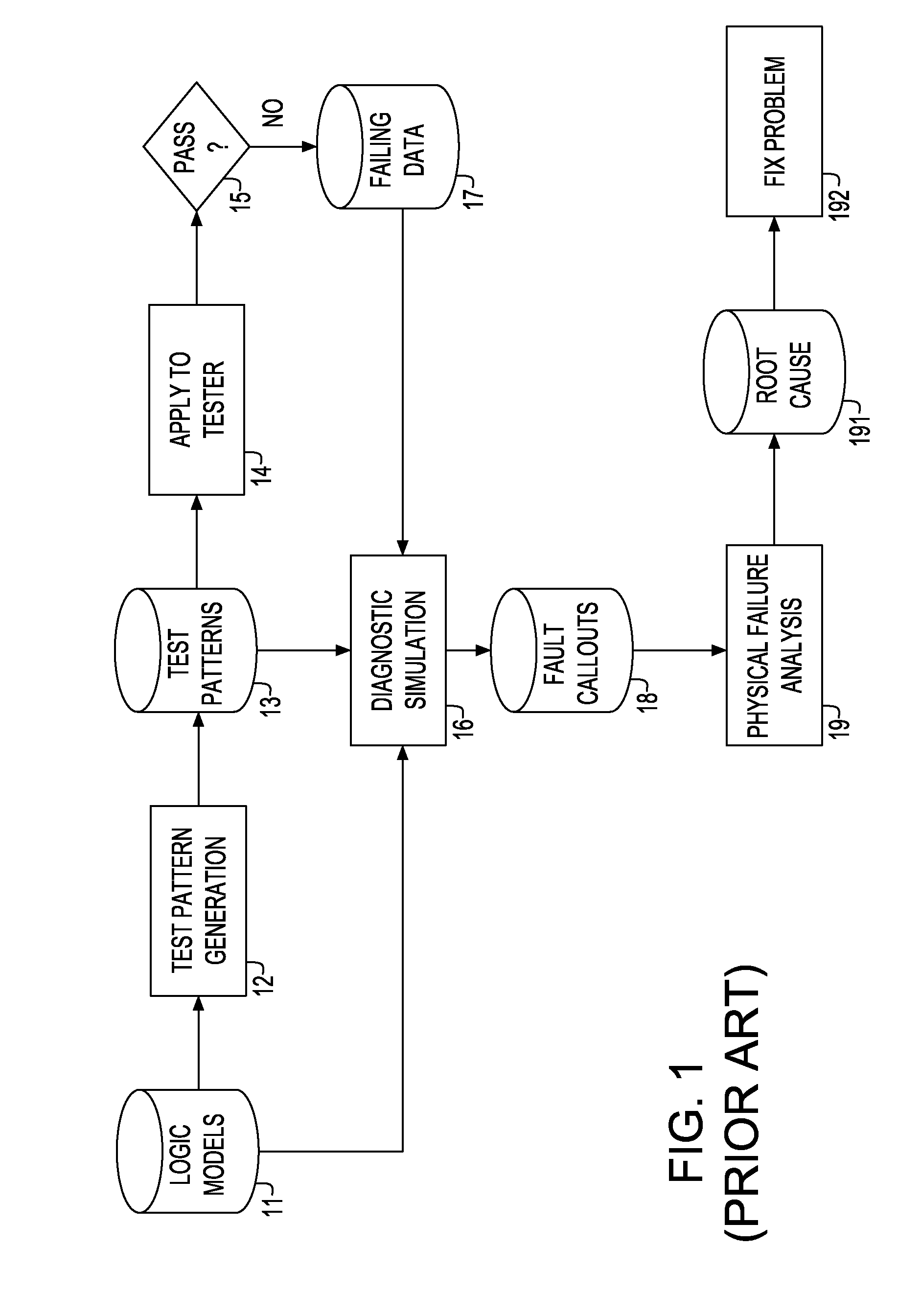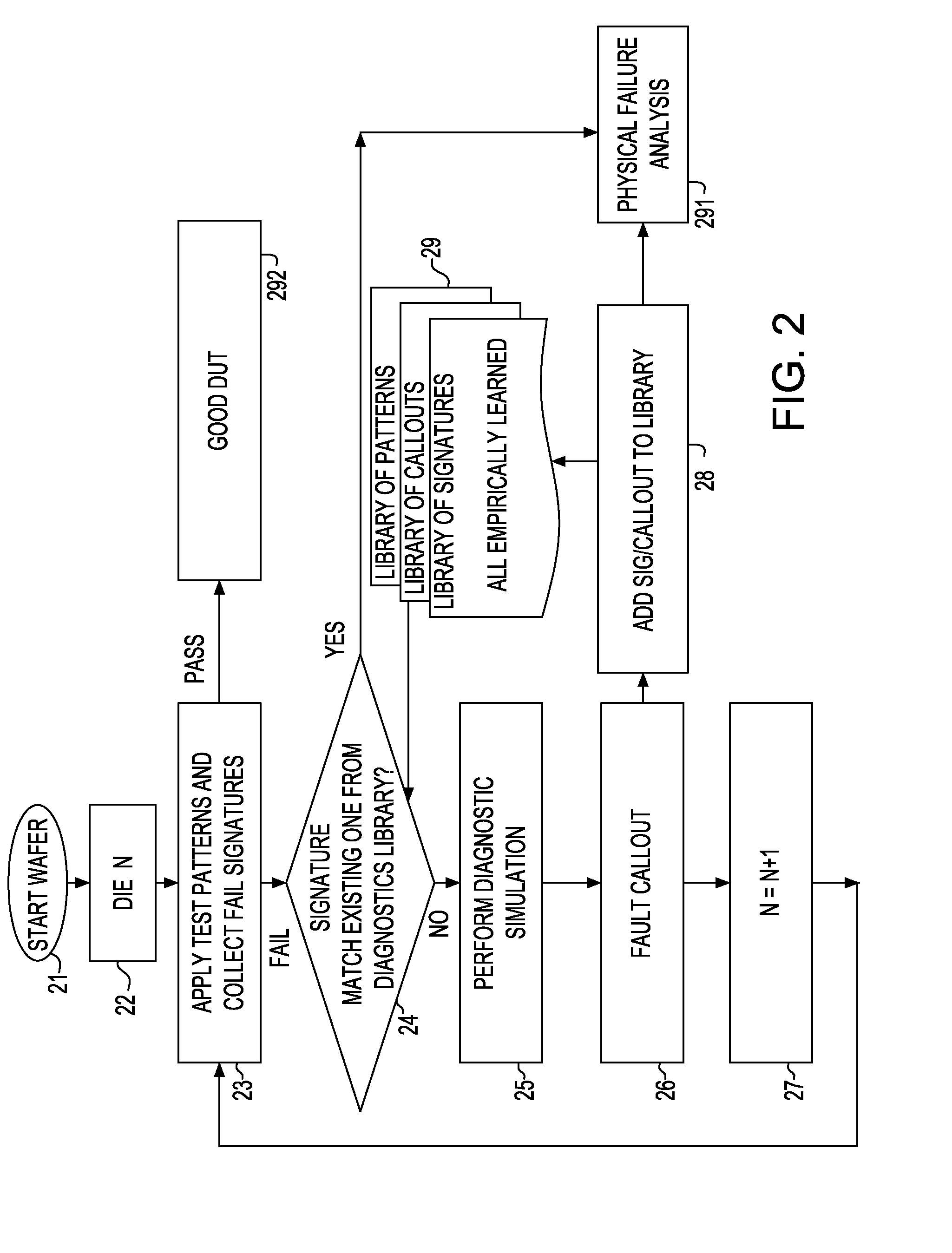Iterative test generation and diagnostic method based on modeled and unmodeled faults
a fault and model technology, applied in the field of design automation of very large scale integrated circuits, can solve the problems of large and insufficient pattern sets with ineffective diagnostic resolution, inability to accurately identify defects, and inability to use effective test patterns and precise diagnostic methodologies, so as to improve the tester's time and improve the fault resolution. , the effect of high confiden
- Summary
- Abstract
- Description
- Claims
- Application Information
AI Technical Summary
Benefits of technology
Problems solved by technology
Method used
Image
Examples
Embodiment Construction
[0038]A preferred embodiment of the present invention is described hereinafter illustrating several system components that tightly and interactively couple the test pattern generation and tester execution process.
[0039]Referring to FIGS. 2-5, the flow and functional components of the Iterative Diagnostic Process are illustrated. The test generation, fault simulation and diagnostic simulation blocks have inputs from the logic design and fault models. The test generation block provides manufacturing test patterns and custom interactive diagnostic patterns, labeled N-detect patterns in the respective figures. Other special purpose algorithms are also invoked to generate custom patterns, as will be described hereinafter.
[0040]The iterative diagnostic and test execution process invokes an Adaptive Fail Device Specific Iterative Process multiple times until a desired diagnostic resolution is achieved.
[0041]The process steps preferably include:[0042]1. Identifying the highest confidence ne...
PUM
 Login to View More
Login to View More Abstract
Description
Claims
Application Information
 Login to View More
Login to View More - R&D
- Intellectual Property
- Life Sciences
- Materials
- Tech Scout
- Unparalleled Data Quality
- Higher Quality Content
- 60% Fewer Hallucinations
Browse by: Latest US Patents, China's latest patents, Technical Efficacy Thesaurus, Application Domain, Technology Topic, Popular Technical Reports.
© 2025 PatSnap. All rights reserved.Legal|Privacy policy|Modern Slavery Act Transparency Statement|Sitemap|About US| Contact US: help@patsnap.com



